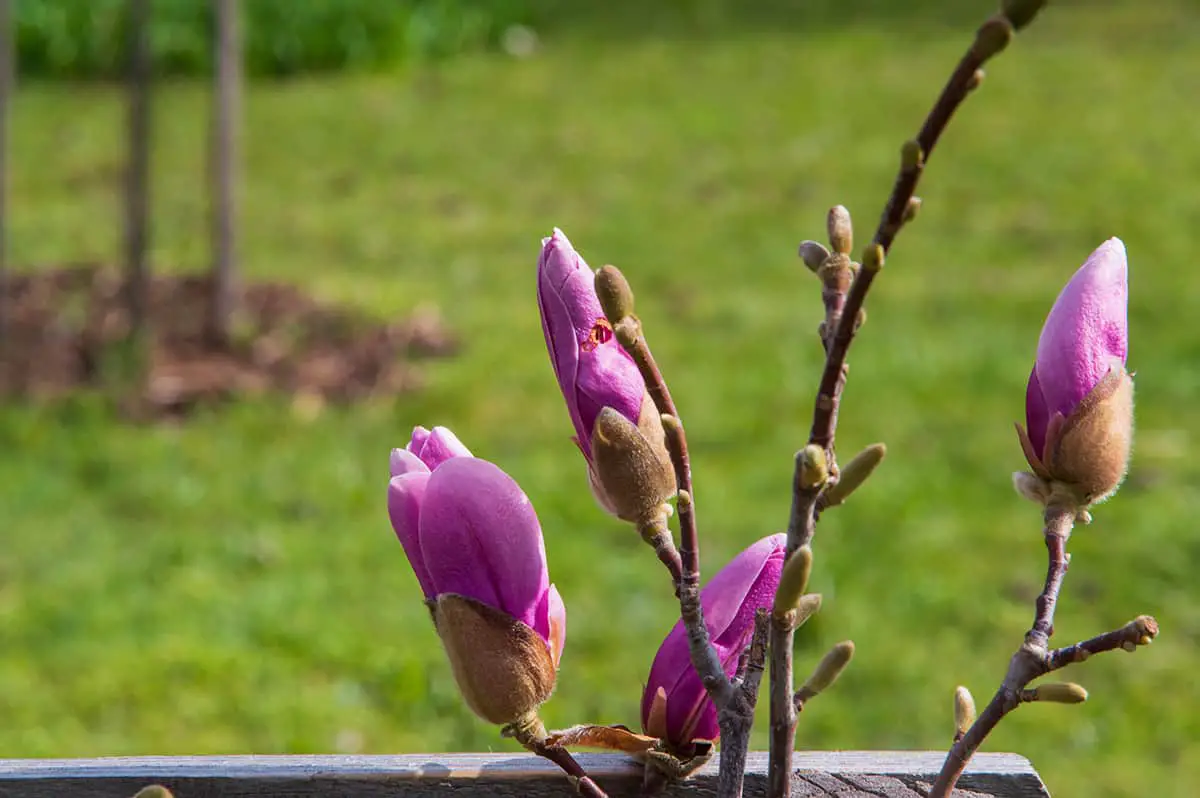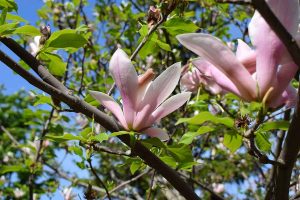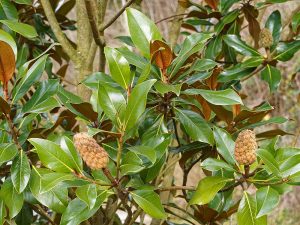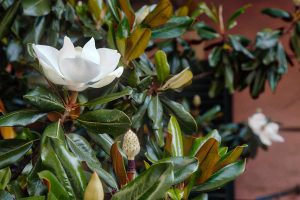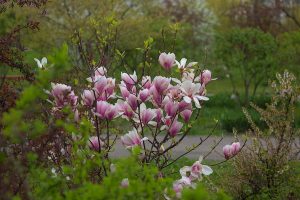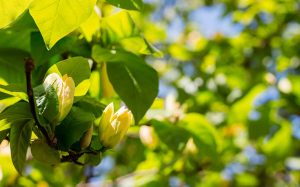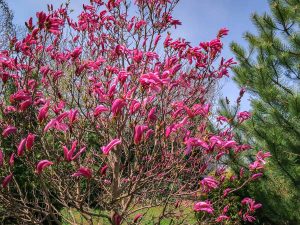The Magnolia liliiflora is more commonly known as the Lily Magnolia because the flowers resemble lilies. This is one of the more compact varieties of magnolia, growing to an average height of between 8 and 12 feet, making it an ideal choice for growing in a container or in small gardens. It can be grown as a medium to large shrub, or a small tree, but will need the same care regardless of its form.
This magnolia is slow growing, taking between 10 and 15 years to reach its eventual height. It is deciduous, with flowers blooming in late spring just before the new leaves unfurl. The flowers of this plant are a feast for the eyes, standing upright on the tips of the bare branches. Each flower will be around 5 inches long, with dark pink-purple petals that are a paler shade of pink on the inside.
The Magnolia liliiflora is native to Asia, where it has been cultivated for many centuries across both China and Japan. After blooming in spring, the plant has the ability to continue blooming throughout summer when conditions are ideal. Learn about how to keep your Magnolia liliiflora happy here, and increase the chances of a long flowering season.
- Botanical name: Magnolia liliiflora
- Common names: Lily Magnolia, Mulan Magnolia, Black Lily Magnolia, Japanese Magnolia
- Plant family: Magnoliaceae
- USDA hardiness zone: 5- 8
- Mature height: Up to 12 feet
- Mature spread: Up to 12 feet
Table of Contents
Varieties of Magnolia Liliiflora
Magnolia liliiflora ‘Nigra’
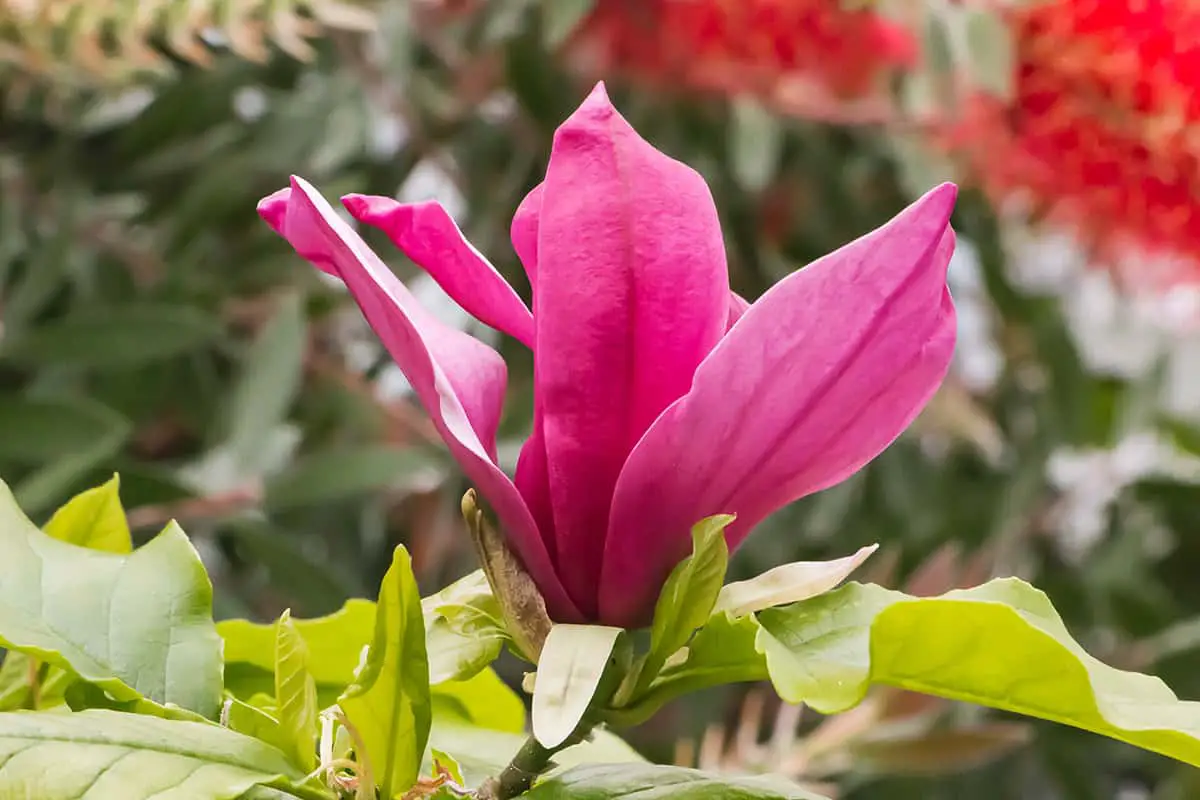
This cultivar of Magnolia liliiflora produces dark pink-purple flowers that can be so intense they appear almost black. This is the most popular variety of Magnolia liliiflora which can be grown in a container or directly in the ground. It will take the shape of a spreading shrub, or a multi-stemmed tree.
Magnolia liliiflora ‘O’Neil’
This cultivar of Magnolia liliiflora has flowers that are a mid to pale shade of purple. They are typically darker at the base and fade out at the tips. This is a prolific bloomer that flowers heavily in spring and can continue to send out flowers sporadically throughout summer. It is hardy down to zone 5 in the US, however as it blooms quite early in spring the flowers can get damaged by frost.
How to Care for your Magnolia Liliiflora Bird
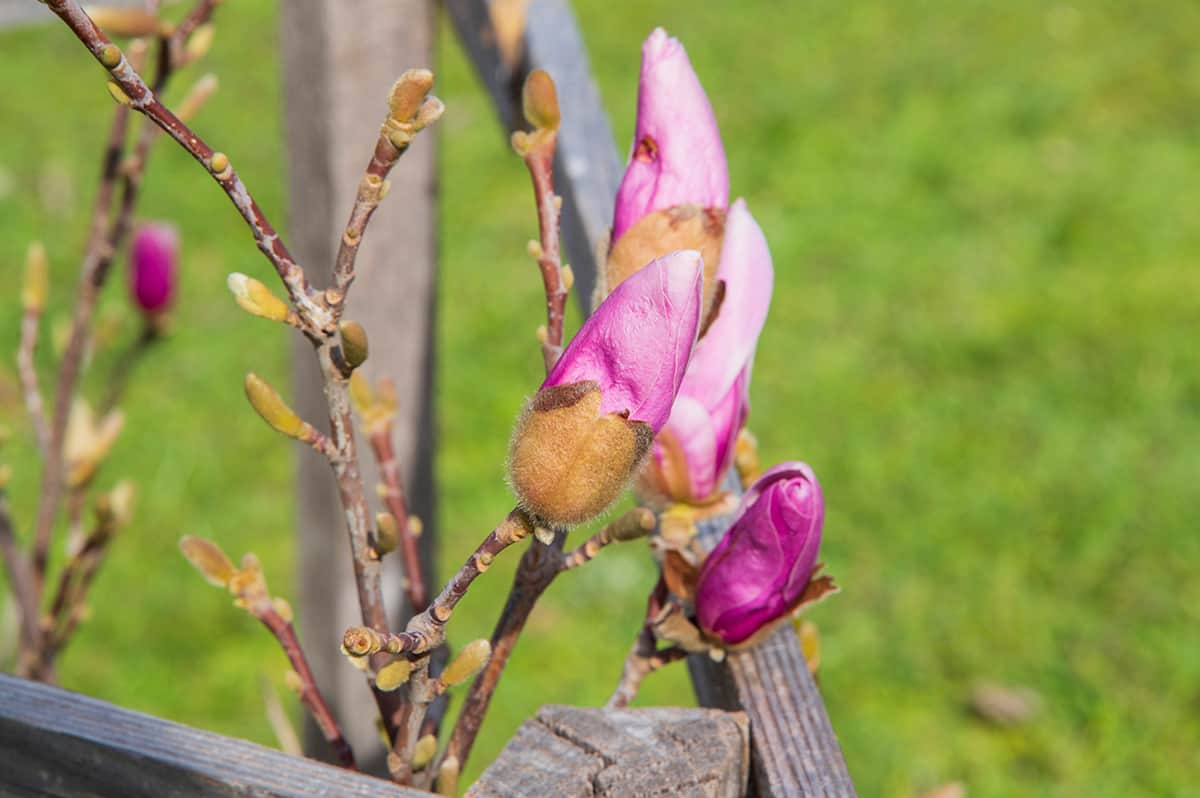
This is a fairly low-maintenance plant that thrives easily but to get the most out of your magnolia, follow these guidelines for their care.
Light
In order to produce an abundance of blooms, the Magnolia liliiflora needs at least 6 hours of natural sunlight each day, though more light is better. This tree will thrive in a position of full sun, but it will also tolerate some partial shade, especially in climates where the summers get very hot.
If you are growing this magnolia towards the upper end of the recommended USDA hardiness zones, then it would be wise to plant it in a partially shaded position so that it doesn’t scorch. This will also help to stop the soil from drying out too quickly since the Magnolia liliiflora needs consistently moist soil.
As the Magnolia liliiflora is a small species, you can create some shade for it by planting it nearby a taller tree or setting it against a wall or fence for some shade. If your magnolia is not flowering as much as you would like, this could be due to a lack of light. Magnolia liliiflora needs plenty of direct light to give it enough energy to bloom.
Soil
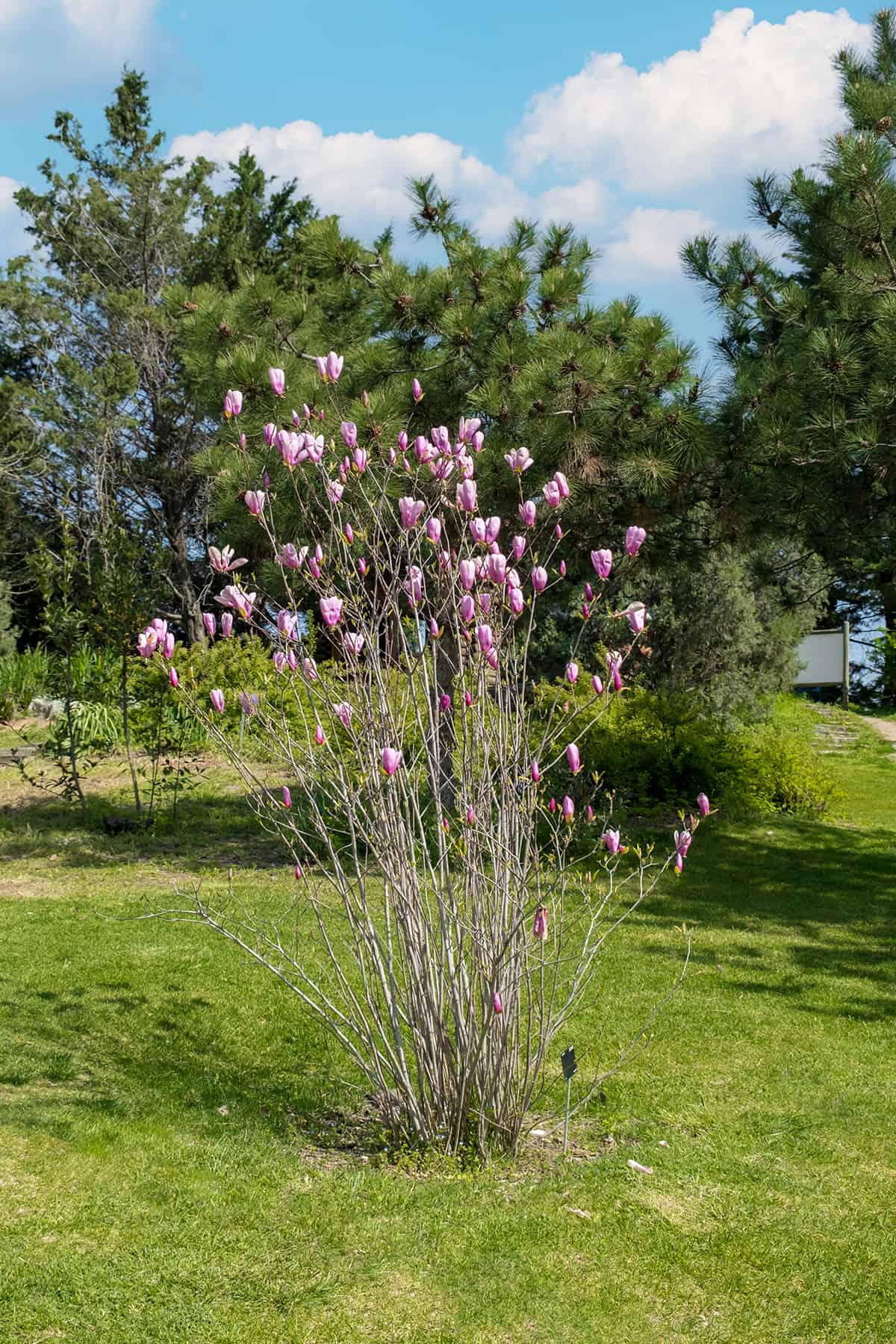
The soil you plant your Magnolia liliiflora needs to be well drained so that it can be watered regularly without retaining too much moisture and becoming soggy. This is because these plants love moist soil, but they don’t tolerate waterlogged soil very well. This means that any compacted soils or heavy and dense soils should be amended before planting the magnolia.
This can be done by adding compost to the soil mix, with a little sand or perlite. The Magnolia liliiflora tree can adapt to different soil types, and it will tolerate sandy or loamy soils, but if you want it to thrive you may need to alter the quality of your soil. Magnolia trees prefer acidic soil, and they can suffer from poor growth if planted in soil which is alkaline.
To find out the pH of your soil you can do so easily using a soil testing kit from the local nursery, hardware store, or online. This will help you understand the pH of your soil, and if it is found to be alkaline then you can use soil additives to help make the soil more acidic.
Magnolia trees love rich soils that have plenty of organic content, and they can struggle in soils which are nutrient-deficient. Improve the level of nutrients in your soil by adding organic compost or fertilizer to the soil.
Water
Magnolia liliiflora are moisture-loving plants, and this is one of the most important aspects of their care. When young, the tree will need to be watered frequently with the aim of ensuring the soil is continually moist. During seasons with recurrent rainfall, you won’t need to pay much attention to the Magnolia liliiflora, but in dry spells, you should water it at least twice a week for the first few years of its life.
Once mature, these plants do develop some mild tolerance to short periods of drought, but an extended time spent in dry soil will lead to the death of the magnolia. Soil that is not kept moist will also result in fewer flowers being produced, so ideally the magnolia should be grown in soil that is thoroughly watered for the entirety of its life.
Temperature
The Magnolia liliiflora is suitable for growing in USDA hardiness zones 5 to 9. It is relatively cold tolerant, though it is by no means the coldest hardy species of magnolia. In zone 5a you may find that late frosts are able to destroy the flower buds developing on the tree so that it is unable to bloom.
To help avoid damage from frost, you can plant the Magnolia liliiflora in a sheltered position, for example in the corner of a garden or against a wall. The tree is susceptible to damage from harsh winds, which can dry it out, and this can also be prevented by planting the magnolia in a somewhat sheltered position.
Fertilizer
The Magnolia liliiflora likes to be grown in nutrient-dense soil, but over time the soil can become depleted of nutrients. Many trees and plants will send their roots deeper underground or spread them further from the tree in search of more nutrients, but magnolias have remarkably shallow roots that don’t do a good job of finding nutrition.
Because of this, fertilizing the Magnolia liliiflora is important, especially if it has been in the same spot for many years and has already absorbed most of the nutrients from the soil. A good way to fertilize the Magnolia liliiflora is by applying organic fertilizer over the top of the soil.
When it rains, the nutrients from the compost will gradually seep into the layers of the soil and boost its nutrient content over time. You can also use a slow-release fertilizer twice a year on this tree to help it get the nutrients it needs. Use a fertilizer that is heavy in nitrogen, and apply this to the soil in early spring before the flower buds have emerged, and again late in fall when all of the leaves have been shed.
Magnolia Liliiflora Bird FAQ’s
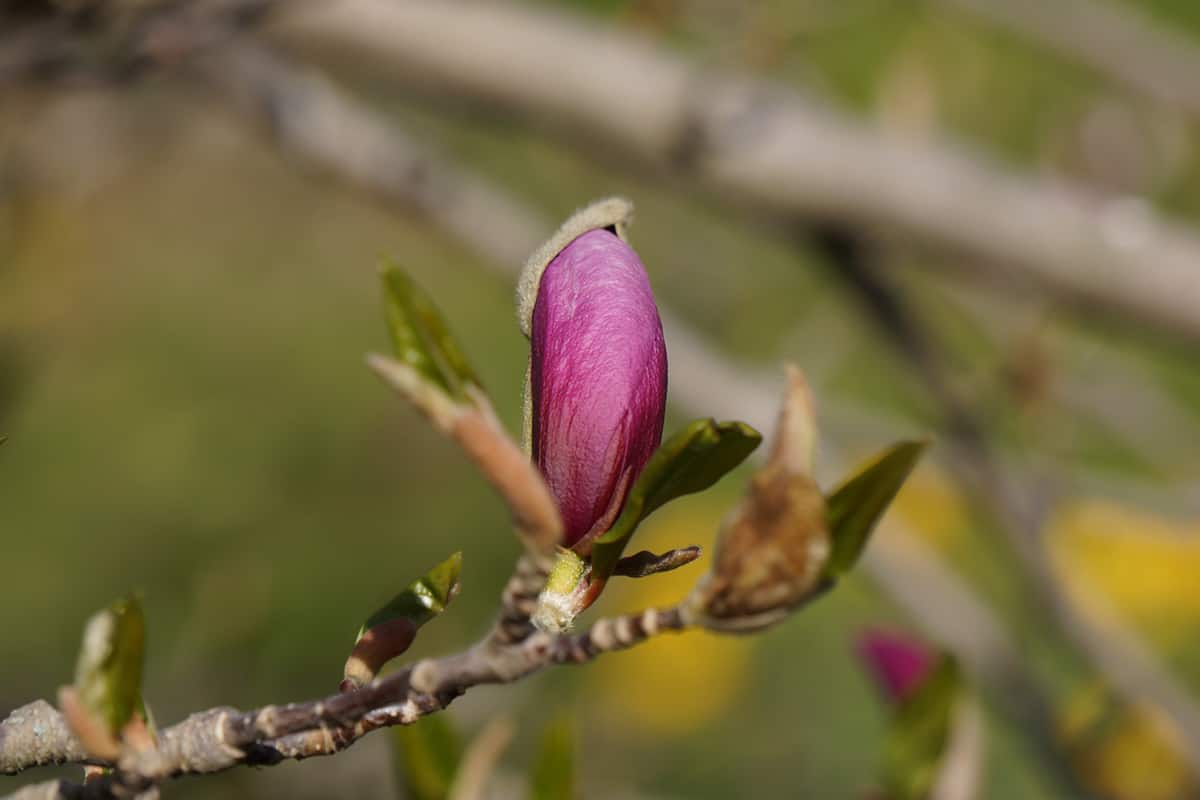
Does Magnolia Liliiflora look like a bird?
The flowers of the Magnolia liliiflora are considered, by some, to resemble birds. This has led to the rise of the name ‘Magnolia liliiflora Bird’ being used in nurseries and online. The origin of this is believed to be a tabloid news outlet in China, who reported a story about the flowers appearing to be bird-like when they first bloom.
However, many people believe that these images were fake, with artificial additions such as the bird’s eyes. In nature, the real Magnolia liliiflora is not particularly reminiscent of a bird.
Are Magnolia Liliiflora Birds toxic to pets?
This species of magnolia, along with every other species in the Magnolia family, is not toxic to animals. This is a safe plant to grow in your garden if you have cats, dogs, or other small animals which have a tendency to nibble on flowers or foliage.
Magnolias are also not toxic to larger animals such as horses, and they are not considered to be toxic to humans. However, it is not advisable to eat any part of the Magnolia liliiflora.
Are Magnolia Liliiflora Birds resistant to pests?
Most magnolias, including the Magnolia liliiflora, are not particularly susceptible to pests. They do not commonly fall victim to pests, but it does happen. Most likely, the type of pests that will be interested in your magnolia are scale insects.
